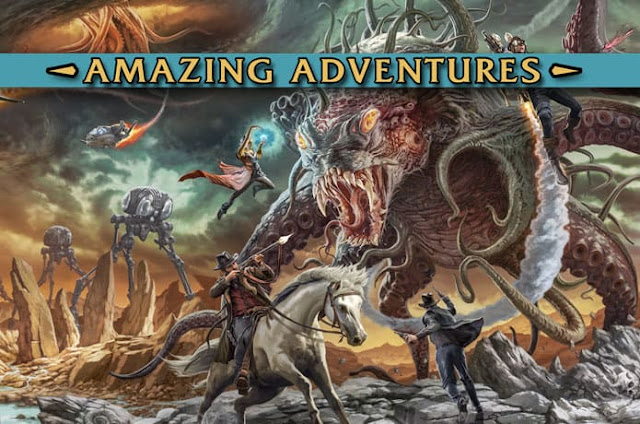
As a darkness falls over a Europe under the heel of the Nazi jackboot, a secret war has begun against the invader, one which at the direction of Winston Churchill, Prime Minster of Great Britain, would “…[S]et Europe ablaze.” This would be led by the Special Operations Executive or SOE, whose operatives, often working with local resistance forces, would carry out acts of sabotage against the Axis war effort, as well as work to establish secret armies which ultimately act in conjunction with Allied invading forces. However, there is a darker, more secret war, this against those Nazi agents and organisations which would command and entreat with the occult and forces beyond the understanding of mankind. Yet even this dark drive is riven by differing ideologies and approaches pandering to Hitler’s whims. The Black Sun consists of Nazi warrior-sorcerers supreme who use foul magic and summoned creatures from nameless dimensions to dominate the battlefields of men, whilst Nachtwölfe, the Night Wolves utilise technology, biological enhancements, and wunderwaffen (wonder weapons) to win the war for Germany. Ultimately, both utilise and fall under the malign influence of the Mythos, the forces of which have their own unknowable designs… Standing against them, ready to thwart their malign efforts are the audacious Allied agents of Britain’s Section M, the United States’ Majestic, and the brave Resistance, willing to risk their lives and their sanity against malicious Nazi villains and the unfathomable gods and monsters of the Mythos themselves, each striving for supremacy in mankind’s darkest yet finest hour!
This is the set-up for
Achtung! Cthulhu, the roleplaying game of fast-paced pulp action and Mythos magic published by
Modiphius Entertainment. Originally published using
Call of Cthulhu, Sixth Edition and
Savage Worlds in 2013, and later
FATE Core, almost a decade on, it returns in brand new edition. Not though written for use with
Call of Cthulhu, Seventh Edition, but rather for use with the publisher’s
2d20 System house mechanics, first seen in
Mutant Chronicles and
Robert E. Howard’s Conan: Adventures in an Age Undreamed Of. The result is a roleplaying game of Lovecraftian investigative action in which the Player Characters can take the fight to the enemy, punch out the Nazis, and wield powerful sorcery or psychic powers against their agents and their Mythos allies, as well as even weirder weapons against the backdrop of World War II and the Nazi war machine.
The Achtung! Cthulhu 2d20: Gamemaster’s Guide—heralded as ‘Issue No. 2’ in a series on the cover—picks up where the Achtung! Cthulhu 2d20: Player’s Guide left off. Written for the Achtung! Cthulhu 2d20 Game Master’s eyes only, this is the supplement exposes and explores a whole lot more of the setting and its secrets, presents the six major factions involved in the new Secret War, their personnel minor, major, and notable, the equipment they field, and the magics they wield. Alongside this, there is extensive advice and suggestions for the Game Master on how to run Achtung! Cthulhu 2d20 and keep it exciting. Fundamentally, the latter is what sets Achtung! Cthulhu 2d20 apart from other roleplaying games of Lovecraftian investigative roleplaying. It is meant to be fast and furious, exciting and unnerving, the tone and style hewing heavily into Pulp action. The Player Characters are not so much Investigators—although some investigation is likely to be required in game—but rather Pulp action, anti-Mythos special forces operatives or secret agents. This can be on an ad hoc basis, with the Player Characters coming from a diverse range of backgrounds and cultures, which is very likely to be the default set-up in a campaign, but it could also be run a military Pulp action horror game with the Player Characters all being part of the same unit. For example, Section fields The Grey Watch, a band of Scottish warriors specialising in hand-to-hand combat, always accompanied by a piper playing the Pipes of McMurden, the sound of which strikes fear into the forces of the Mythos, whilst Majestic sends out its Flaming Salamanders of the Majestic Corps, consisting of U.S. marines in flame retardant clothing wielding all manner of flame-based weapons to burn out the Mythos. The action-packed cover of the Achtung! Cthulhu 2d20: Gamemaster’s Guide very much sets the tone for the roleplaying game, as does the Achtung! Cthulhu 2d20: Player’s Guide.
The Achtung! Cthulhu 2d20: Gamemaster’s Guide begins by exploring the factions and history of Secret War, and this not merely divided between the Allies and the Nazis. There are instead six factions, and to extent, this does feel like a set of factions for both roleplaying and wargaming, something that the extensive set of stats for allies, enemies, and forces in the later ‘Heroes & Villains of the Secret War’ and ‘Bestiary’ does nothing to persuade otherwise. On the Allied side are the British Section M and the American Majestic. Both capture the flavour and feel of their respective mundane counterparts, playing to some stereotypes too in keeping with the roleplaying game’s Pulp leanings. Thus, Section M is reserved, but combines desperate ingenuity and improvisation with measured study and cups of tea, whilst Majestic is brasher, more muscular, and relies on psychic operations rather than the classical study of magic. On the Nazi side are two factions, The Cult of the Black Sun and Nachtwölfe, which have different approaches to the Mythos and despise each other. Black Sun uses Hyperborean magics and knowledge to work back and forth between the Dreamlands and the waking world in an effort to free Yog-Sothoth. Nachtwölfe employs Atlantean superscience to develop, arm, and field an array of fantastic new weapons, armoured fighting vehicles, and more. In addition, both the Mi-Go and the Deep Ones have been drawn into the war, sometimes allies of the Nazis, sometimes not, as both have their own agendas. The backgrounds, histories, military structures, bases, missions and goals are all given for the six factions in what is an excellent overview of the Secret War. There is a timeline too, running from 1939 to 1945, noting important events throughout the Secret War, and hinting at potential scenarios which the Game Master could purchase and run for her players, but notably still leaving plenty of room into which the Game Master can insert her own adventures.
The Game Master can arm and equip her Player Characters and NPCs with a vast array of strange and wonderful weapons and devices. For example, the elite snipers of the Bronze Berets use the Beowulf Monstr Slayer Kk. 1 Sniper Rifle, a magnetic propulsion weapon sometimes combined with Elder Sign-inscribed rounds, whilst the Blevins Steam-Assisted Enzymatic Weapons which fire gouts of superheated steam and high-temperature active enzymes which dissolve the physical make-up of some trans-dimensional creatures. There are more mundane—in comparison—items too—like the Sword-Cane or the Bolas (until that is, the weights are filled with explosives!), and in general, such devices and weapons are rare and the ammunition, where required, available in limited quantities. In comparison, the Nazis of both Black Sun and Nachtwölfe have much wider range of weapons and equipment, and it is more widely manufactured, especially the technologically-focused Nachtwölfe. For example, Wotan’s Staff-Spear or ‘Grungnir’, are tipped with black steel forged in the Dreamlands and aid in the casting of Mythos magic, whilst the Anddrsserher-Helm worn by some Nachtwölfe soldiers is bulky, but contains a set of lenses—based on the Cornwallis design stolen from New World Incorporated in a nice nod to the classic Call of Cthulhu campaign, The Fungi from Yuggoth or The Day of the beast—that provides magnified vision, infrared vision, and the ability to see creatures and things that the human eye is normally incapable of seeing. Weapons and devices of both the Mi-Go and the Deep Ones are also given.
Besides technology, all sides field magic during the Secret War, although reluctantly in the case of the Allies. In the main they restrict themselves to studying and using magics, spells, and rituals from the Celtic and Runic or Norse traditions, as well as Psychic powers, rather than the Mythos magic. Psychic powers are themselves treated as a sort of magic, but a very modern one, and all three traditions are more fully detailed in the Achtung! Cthulhu 2d20: Player’s Guide. The Achtung! Cthulhu 2d20: Gamemaster’s Guide instead focuses on Mythos magic, including both its battlefield and ritual applications. These are akin to the classic magics of traditional Lovecraftian investigative horror, but classified according to the deity they relate to—Cthulhu, Nyarlathotep, and Yog-Sothoth. These are likely to be used by the Deep One and Mi-Go factions and to limited extent, if at all, by the other factions. They are accompanied by numerous rituals, some of which like the Dust of Ibn-Ghazi and the various versions of Evoke/Dismiss Deity will be familiar from other roleplaying games of Lovecraftian investigative horror, whilst the Pulp nature of Achtung! Cthulhu 2d20 is highlighted by the inclusion of healing magic—for both the body and the mind. Similarly, the list of Mythos tomes is a mix of the old and the new.
For the Game Master there is an extensive chapter of advice and suggestions as to how to run Achtung! Cthulhu 2d20. It covers her role and responsibilities, letting the players and their characters be awesome, how to handle both Threats and the action, and so on before delving in the mechanics of the 2D20 System explained in the Achtung! Cthulhu 2d20: Player’s Guide, but here from the Game Master’s perspective. It pays particular attention to handling Truths in play and the consequences of failure. The Momentum and Threat economy are also examined again, and there is advice on creating and handling memorable NPCs too.
This last piece of advice leads into the last two chapters of the Achtung! Cthulhu 2d20: Gamemaster’s Guide, which together take some forty percent of the book. First, ‘Heroes & Villains of the Secret War’ looks first at the British and American forces, and covers both standard troops and special forces, the latter including those involved in the Secret War, like the Scared Blades: Gopal’s Ghurkhas from Nepal and the Pathfinder Demin Hunters from the First Nation Tlingit peoples. It does a similar thing for Black Sun and Nachtwölfe, as well as the Resistance operating in occupied Europe. Included too are all of the major figures in each of the different actions, whether that is Sally Armitage of majestic or Mina Wolff of Nachtwölfe. Each is rated as either Trooper, Lieutenant, or Nemesis level NPC, depending upon their individual degree of threat and involvement in Secret War. Second, the ‘Bestiary’ does a similar thing for the Mythos. It includes ordinary beasts too, plus the creations of abhorrent science, but in the main presents the various creatures, entities, and gods of the Mythos. Ranging from Colours Out of Space and Ghouls all the way up to Azathoth, Hastur, and Shub-Niaggurath, the things of the Mythos are classified along similar lines and detailed under the 2D20 System. There is a handful of the unfamiliar thrown into the mix to add some unfamiliarity too, but whilst a great many of the entries are familiar, at least conceptually, Achtung! Cthulhu 2d20 gives them, if not a greater degree of agency, then a greater degree of active and more immediate agency. There is very much a sense in Achtung! Cthulhu 2d20 of the Mythos factions not being prepared to play the long game as is traditional both in Mythos fiction and Lovecraftian investigative horror, but preferring to play a more active, if still secret, role in the affairs of men, whether that is as allies or as enemies, and so taking advantage of the chaos and acceleration of change that comes with the war between the Allies and the Nazis.
So the question is, what is missing from the Achtung! Cthulhu 2d20: Gamemaster’s Guide? Really, only the two aspects of the game. Vehicles, both Allied and Nazi, are not included despite all the various troops are, though they are instead given in the Achtung! Cthulhu 2d20: Player’s Guide. What is missing is a feature of almost every roleplaying game of Lovercraftian investigative horror and that is Sanity and insanity. Being a decidedly pulpier, more action-orientated, Achtung! Cthulhu 2d20 instead has a Player Character potentially suffer insanity once he has suffered enough mental damage to defeat him, whether from encountering a Mythos monster or reading a Mythos tome. and remove him from the combat and then taken more. This shifts the danger of losing Sanity and suffering from insanity as to more of an afterthought than perhaps a constant worry, but it could have been addressed more clearly. Especially for the Game Master or player adapting from another roleplaying game of Lovercraftian investigative horror.
Physically, the
Achtung! Cthulhu 2d20: Game Masters Guide is well presented. It does need an edit in places, but it is well written, and again, the
Achtung! Cthulhu 2d20: Player’s Guide before it, the book’s full colour artwork is fantastic. Much of it has been seen in the previous iteration of
Achtung! Cthulhu, but the new artwork in the
Achtung! Cthulhu 2d20: Game Master’s Guide is really good, capturing the action, excitement, and horror of the war against the darkest forces of the Axis powers.
In its treatment of magic, the monsters of the Mythos, and emphasis upon action,
Achtung! Cthulhu 2d20 is not a game for the player or Keeper who prefers the classic play style of a roleplaying game of Lovecraftian investigative horror. For the player and the Game Master who want to emphasis a Pulpier, more action-driven, and less horrific approach to Lovecraftian investigative roleplaying,
Achtung! Cthulhu 2d20 is a great choice, and the
Achtung! Cthulhu 2d20: Game Masters Guide ably supports this style and tone with the engaging background of the Secret War, a wide array of foes to challenge the Player Characters, and the means for them to fight back and keep humanity safe.

 Isles of Avalon
Isles of Avalon

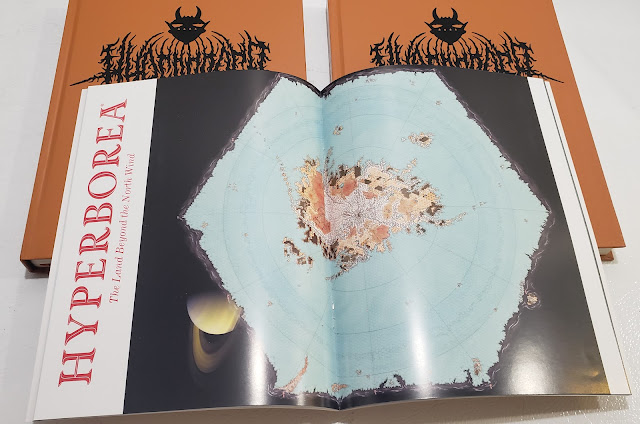

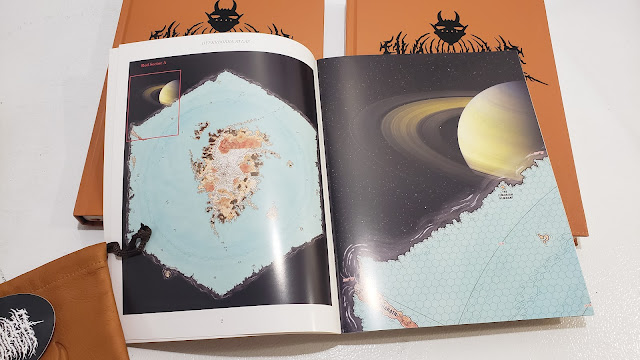
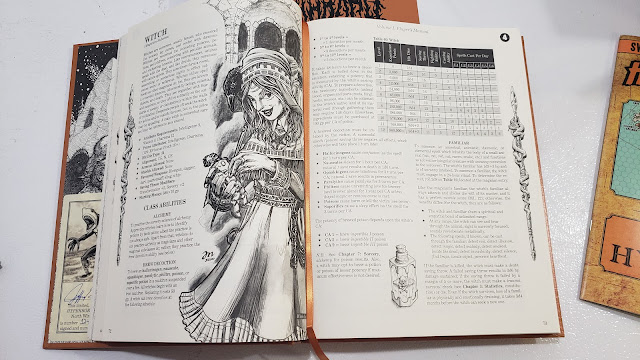
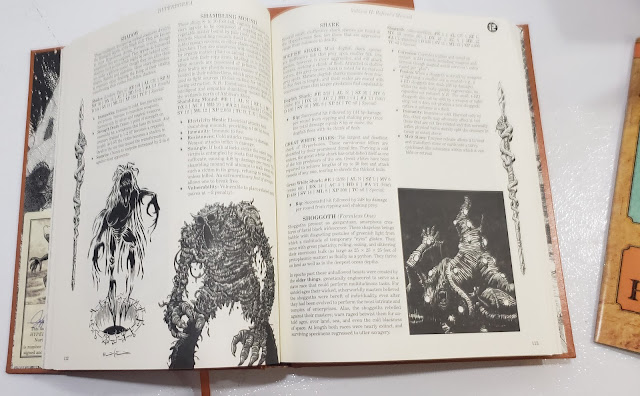
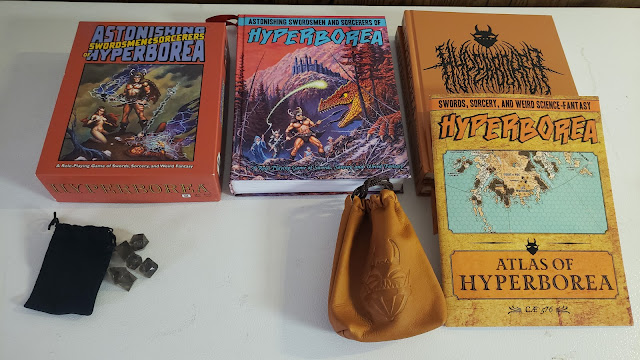


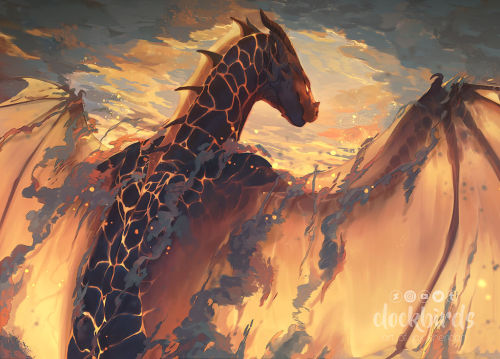
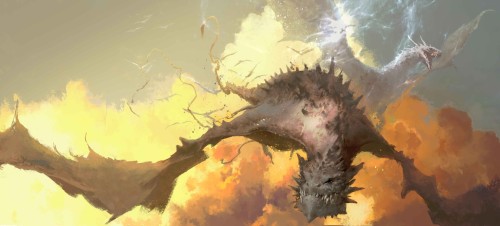
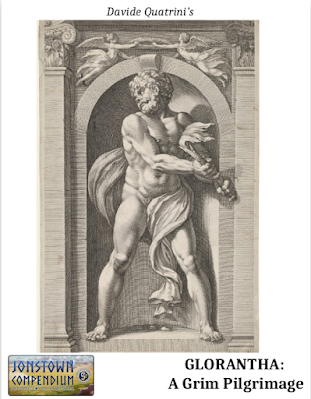
.jpg)
